#320 km Range
Explore tagged Tumblr posts
Text
Citroen eC3 Shine DT Review: Affordable Electric Hatchback
₹13.35 Lakh Design and Build Quality Exterior:The Citroen eC3 Shine DT boasts a contemporary design with dual-tone color schemes and chrome accents, giving it a premium urban vibe. The bold matte black front grille and LED daytime running lights (DRLs) enhance its road presence. Wheel arch cladding and skid plates add a touch of ruggedness, while the body-colored bumpers and ORVMs (Outside Rear…
#10.24-inch Touchscreen#320 km Range#Affordable EV#Basic Safety Features#Budget EV#CCS2 Charging Port#Child Safety Locks#Citroen EV#City EV#Compact Electric Car#Connected Car Technology#Dual-Tone Design#Eco Drive Mode#Electric Hatchback#EV for Urban Commute#EV with Alloy Wheels#Family EV#Fast Charging EV#Front-Wheel Drive EV#Li-ion Battery#Manual Adjustable Seats#Modern Infotainment#Natural Air-Cooled Battery#Practical Electric Car#regenerative braking#Tags: Citroen eC3 Shine DT#Tilt Steering
0 notes
Photo


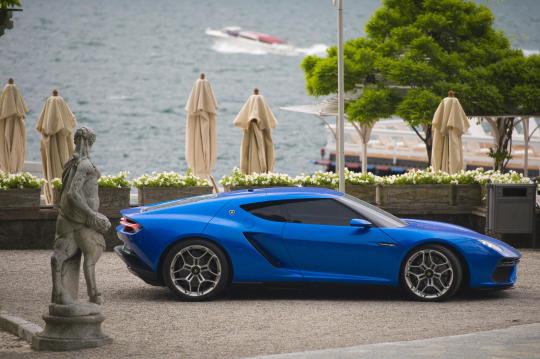
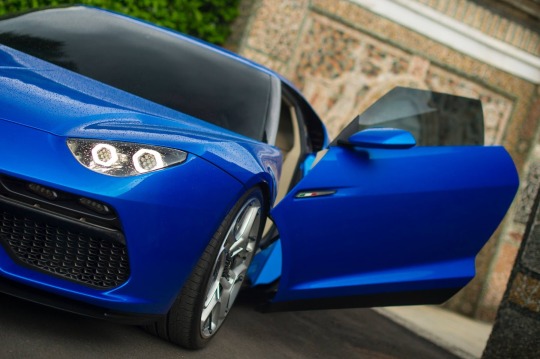

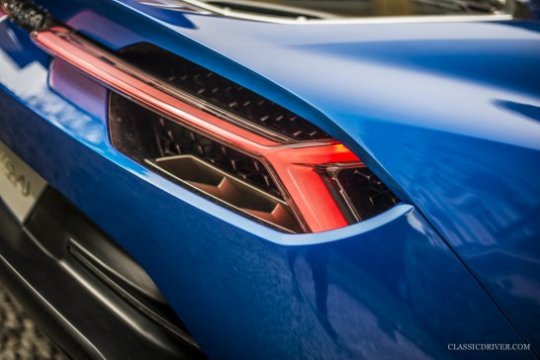




Lamborghini Asterion LPI 910-4 (Concorso d'Eleganza Villa d'Este)
In Greek mythology, Asterion is a second name for the Minotaur, a hybrid creature with the body of a man and the head of a bull. The name chosen was especially successful.
The Asterion defines a solution to significantly reducing CO2 emissions through innovative technologies. It features a high performance hybrid system with a V10 5.2 litre longitudinally-placed, naturally aspirated mid-engine which, in combination with three electro motors, provides a maximum power output of 669 kW (910 hp). Asterion accelerates from 0-100 km/h in 3.0 seconds, with a top speed of 320 km/h. The Asterion LPI 910-4 guarantees unique Lamborghini driving feel with a smooth and reactive driveability and superior power. The vehicle doesn't allow only an exceptionally low CO2 emission of only 98g/km, but more importantly for city driving, the Asterion has a pure electric range of 50 km.
Conceived and developed entirely in-house by Lamborghini, the Asterion LPI 910-4 takes the design and cutting-edge engineering expertise found in the current Lamborghini product range, adding innovative hybrid technology, and thus creating a Lamborghini that is clearly different – with a new, unexpected and sensual design, in line with the technical characteristics of the car – but yet still unmistakably a Lamborghini.
In the aesthetic section, there was no doubt that it was a Lamborghini prototype, although the designer Filippo Perini, creator of the Aventador, the Urus and the Veneno, resorted to a 'neo-retro' style, quite original and attractive, under my opinion Unfortunately, this project did not spawn a production model. Also in 2014 the Urus concept car was presented and it is unnecessary to explain which vehicle focused all the efforts on the part of the Bolognese company...
126 notes
·
View notes
Text

HiPOD: Polar Protodunes Emerge
In Western Olympia Undae, a region along the high polar latitudes of Mars, young windblown systems are emerging beneath the cliffs of the North Polar layered deposit. Persistent downslope winds, coupled with an ample supply of sand, create ideal conditions for the development of new bedforms near their sand source.
These nascent features, ranging from centimeters to meters in height, are known as “protodunes.” As the term suggests, these transient landforms often evolve into fully formed sand dunes with steep avalanche slopes, referred to as “slipfaces,” which provide clues about migration direction. Protodunes here gain sand volume, develop slipfaces, and transition into fully formed barchan dunes several meters tall within 3 to 5 annual cycles.
This view shows two such protodunes upwind of the single taller dune (on the right). This knowledge is thanks to repeat targeting by MRO HiRISE, our digital terrain models and a recent publication that highlights some of these rapid changes. (Image cutout is less than 5 km across.)
ID: ESP_053270_2635 date: 7 December 2017 altitude: 320 km
NASA/JPL-Caltech/UArizona
24 notes
·
View notes
Text
Animal of the day: Peregrine Falcon!
The peregrine falcon, or duck hawk, is a species of raptor. This bird of prey is the fastest animal on Earth! They can dive at speeds of over 320 km/h (200 mph).

Their habitat extends far and wide, and they can be found nearly everywhere on the planet. They are very versatile hunters, and can even thrive in urban areas!

^ A map showing the range of the peregrine, by subspecies.
28 notes
·
View notes
Text

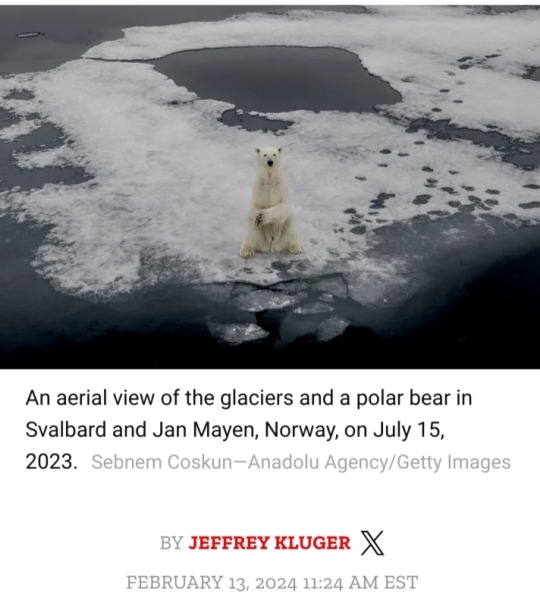
It’s not easy to swim 175 km (109 mi.) when you’re starving to death. It’s not easy either to try to survive when you’re shedding body weight at a rate of 1 kg (2.2 lbs.) a day.
And it might be hardest — or at least most tragic — of all if you’re a nursing mom and your calorie intake has dropped so low that you can no longer produce the milk you need to care for your young.
As a new paper in Nature Communications reveals, all of those challenges and more are facing the world’s polar bears, thanks to vanishing sea ice in our warming world, denying the animals a platform that they need to hunt for seals.
If the trend isn’t reversed soon, the estimated 26,000 polar bears in the wild could start to lose their hold on survival before the middle of this century.
The researchers were less interested in establishing the fact of the bears’ food plight; scientists are already aware of that problem.
What they were more focused on learning was both how gravely the nutritional loss is affecting the animals’ health and the alternative food sources they’re scrounging for on land.
To do their work, the scientists followed 20 different polar bears in Manitoba, Canada, from 2019 to 2022, fitting them with GPS trackers and video collars and periodically tranquilizing them and analyzing their blood, body mass, daily energy expenditure — basically a measure of calories coming in versus calories going out — and more.

“The polar bears in Hudson Bay [Canada] are probably at the edge of the range at which they can survive right now,” says Anthony Pagano, a research biologist with the U.S. Geological Survey and the lead author of the paper.
“Most of the modeling work suggests that around 2050, they are going to be on land and away from their primary habitat [on the ice].”
The contraction in range of the Hudson Bay community is likely to be reflected in the ranges of the 18 other polar bear subpopulations scattered throughout the Arctic as well.
Across the arc of the study, the data Pagano and his colleagues gathered was troubling.
Weight loss varied from bear to bear, with the daily loss of 1 kg representing just an average.
Some of the subject animals dropped up to 1.7 kg (3.75 lbs) every 24 hours.
That may not seem like much when an adult male polar bear can tip the scales at 550 kg (1,200 lbs) and a female at 320 kg (700 lbs), but it can add up fast.
And with less available to eat, the hungry bears have to travel farther and farther distances to find their next meal.

The individual that swam 175 km — a young female — set the record among the bears studied, but another, older female also covered 120 km (75 mi).
The endurance swims in search of food are energy-intensive and often fruitless for the bears.
They are efficient hunters when they’ve got the purchase of ice beneath them, Pagano and his colleagues explain, but they are clumsy when they are going after seals and trying to swim at the same time.
That leaves them scavenging on land for foods they would not ordinarily eat — and getting little payoff for their efforts.
“Polar bears are feeding on ducks and geese — catching them when they’re flightless and molting — as well as on their eggs,” Pagano says.
Other foods on the desperate bears’ menus included berries and other vegetation, bones, antlers and, in one case, a beluga whale carcass.
None of that fare is as calorie-rich as a steady diet of live, blubber-packed seals.
Some of the bears vigorously sought out these alternative sources of nutrition; others opted for a different strategy: resting and conserving the energy contained in their body mass.
The latter approach costs stored calories, but so does the former, as all of the plodding and searching burns through energy too.
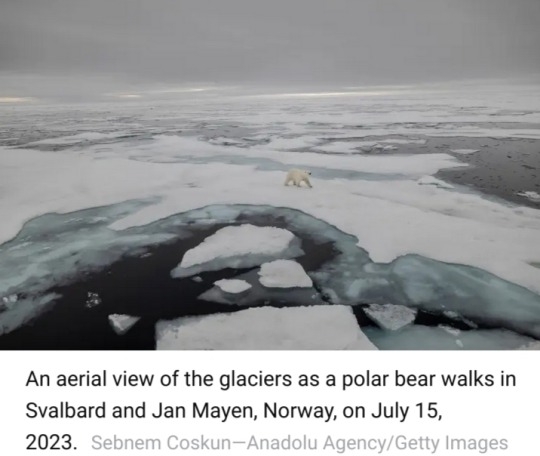
“The amount of body tissue they were burning to try and find those terrestrial foods was basically the same as what they’d get from eating those terrestrial foods,” Pagano says. “So there’s no actual benefit.”
The researchers were surprised to find that the bears were going through not just fat stores to compensate for the poor rations but lean muscle tissue too.
Pagano is not certain why their metabolisms would adopt that strategy, but he has some ideas.
“There's some thought that burning lean body mass might be more energetically efficient in some respects relative to burning body fats,” he says.
“Also, conserving their body fat might provide them better thermal regulation once the winter and the ice return.”
That seasonal freeze-over is shorter than it used to be — though not by a lot.

In the 1980s, polar bears were on land for about 110 days out of the year, with no need to eat terrestrial foods since the fat deposits they’d accumulate thanks to wintertime seal-hunting was enough to carry them the rest of the year.
Now they're off the ice for 130 days on average.
It’s a measure of the nutritional knife’s-edge on which the bears operate that just 20 days can make the difference between whether they live and thrive or starve and die.
The individuals most likely to perish when food supplies are poor are young adults — due to their less-developed hunting skills — and cubs, whose principal source of nutrition, their mother’s milk, can vanish in lean times.
“If females are fasting for extended periods, they will actually stop lactating,” says Pagano.
Full-grown bears are by no means immune to danger, however.
The authors cite earlier research predicting that the adult male population could decrease by 24% if the ice-free summer season increases to 180 days.
This is especially so given the enormous energy intake — about 22,500 calories per day — that the big males need to maintain their body weight.
Polar bears aren’t the only species menaced by these findings. Humans are in harm’s way too.
The more time bears spend off the ice and on land, the greater the likelihood they will wander into cities and towns in search of something to eat — and residents could easily be hurt or attacked if they get in the way of the hungry animals.
People might also even be seen as sources of prey.
“When polar bears are on land, they act like other bears and become omnivores,” says Pagano. “It does raise the potential for human-bear interactions.”


🆘🐻❄️🥺
#polar bears#sea bears#Ursus maritimus#U.S. Geological Survey#Manitoba#Canada#Nature Communications#climate change#wildlife conservation#food source#nutritional loss#animal health#marine mammals#Arctic Circle
11 notes
·
View notes
Text
BOTD: Peregrine Falcon

^Image credit: Ambquinn
Peregrine Falcon (Falco peregrinus)
The Peregrine Falcon is famous for being the fastest animal on the planet, reaching up to 200 mph (320 km/h) during their steep hunting dives. The highest measured diving speed recorded by a Peregrine Falcon is 242 mph (389 km/h). They typically nest on cliff edges, but will also nest on tall buildings in some of its range.
#bird of the day#birdwatching#peregrine falcon#peregrine#birds of prey#bird of prey#falcon#bird record holders#fastest bird in the world#fastest#birds of the uk#birds of the uk and ireland#falco peregrinus#raptors#birding#birds#bird
139 notes
·
View notes
Text


German soldiers pose on and in the barrel of the long range Paris Gun (Paris-Geschütz/Pariser Kanone) which bombarded Paris from a distance of 120km during the Spring Offensive. May 1918.
The gun was capable of firing a 106-kilogram (234 lb) shell to a range of 130 kilometres (81 mi) and a maximum altitude of 42.3 km (26.3 mi). The distance was so far that the Coriolis effect—the rotation of the Earth—was substantial enough to affect trajectory calculations.

As military weapons, the Paris Guns were not a great success: the payload was small, the barrel required frequent replacement, and the guns' accuracy was good enough for only city-sized targets. The German objective was to build a psychological weapon to attack the morale of the Parisians, not to destroy the city itself.
Between 320 and 367 shells were fired, at a maximum rate of around 20 per day. The shells killed 250 people and wounded 620, and caused considerable damage to property.
#thanks to @spoopinatur4l for sending this my way#wwi#I'm breaking up the images you sent me and adding some context bc i like context
15 notes
·
View notes
Photo

MANSORY individualized the Mercedes-AMG GT63 S E Performance, among one of the most exclusive and powerful vehicles of the Mercedes-AMG range. The exclusive conversion offers lightweight carbon fiber component aerodynamics, suspension modifications, several 22” wheel designs and an 880 hp / 1.490 Nm performance upgrade, Vmax 320 km/h and 0-100 km/h in 2.8sec. CO2 emissions (combined): 193 g/km, fuel consumption (combined): 8.2 l/100km, power consumption: 12.0 kWh/100km #mansory #mercedes #amg #gt63 #coupe #carbon #customized #hybrid #luxury #automotive #madeingermany #bespoke #official #tunersource (at Miami, Florida) https://www.instagram.com/p/CpV5EsQpERz/?igshid=NGJjMDIxMWI=
#mansory#mercedes#amg#gt63#coupe#carbon#customized#hybrid#luxury#automotive#madeingermany#bespoke#official#tunersource
42 notes
·
View notes
Text
Ron Speirs - Peregrine Falcon

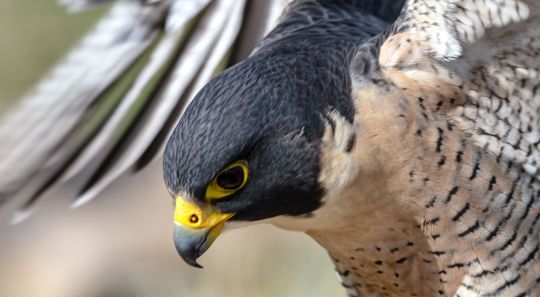
Birds of prey souls are driven, driven, driven folks. If you’re looking for a good fit for someone like Magneto or Batman, or our very own Ron Speirs, a bird of prey is almost always a perfect fit because these folks know what they want, how to get it, and damn anyone and anything else. Birds of prey are extremely specialized hunters, and people with birds of prey daemons give off the impression of total confidence and boldness. They’re reserved and aloof, but you know from first glance these people are extremely capable in their field and probably not someone to be trifled with.
But, much like Ron reveals that he’s really a total softie who loves the men (holding Chuck’s hand while he’s unconscious, bluffing to Dick that he’s only staying in the Army for ~practical reasons~ when it’s clear he wants to stick around to help the men transition, getting grumpy with Lip for not taking care of himself), many birds of prey - Peregrine Falcons included - are actually extremely loving partners and parents. Peregrine Falcons are monogamous and return to the same nesting sites throughout their lives, with some birds returning to the same places their parents raised chicks to start their own families. A mated pair defends their nest together, and some have successfully fended off or killed much larger birds like golden eagles and snowy owls. Ron isn’t a pack animal, but he is a team player.
Peregrine Falcons are also the fastest birds on the planet, reaching 320 km/200 mph during its hunting stoop. They’re favorite birds in falconry because they’re athletic, easy to train, and eager to hunt. Peregrines are also very adaptable creatures that can live happily in cities, mountain ranges, basically anywhere except the extreme arctic and extreme tropics. They’ll prey on basically any medium sized bird available vs. sticking to a particular favored species, making a Peregrine Falcon soul similarly opportunistic and practical, much like Sparky Speirs and his sticky fingers/general acceptance of what has to be done in wartime.
While a Peregrine Falcon soul is generally introverted and aloof or even territorial and stand offish with strangers, they do care very deeply for their people and are very attuned to their environment. They’re determined and hold themselves (and others) to high standards, but good at knowing when to back off and try something new vs. invest more time in a task that isn’t working out. Ron isn’t interested in making friends with everyone and genuinely relishes his reputation as a heartless killing machine because he’s confident in himself and knows what he wants and how to get it. Other people’s opinions, unless they’re close to taking something he wants, just don’t matter much to him.
While I try not to pick daemons based solely on appearance or symbolism, I also think it’s worth mentioning that in medieval England, only members of the royal family were allowed to hunt with Peregrines, which I think Ron would be delighted by in much the same way he thought it was hilarious he shared a birthday with Hitler. I’ve called Ron’s daemon Octavia for some fun old world flair for our favorite pseudo history nerd and it really adds a special something to imagine a grumpy looking falcon perched on his shoulder when rewatching the show.
( HBO War Daemon AU Masterlist )
34 notes
·
View notes
Text
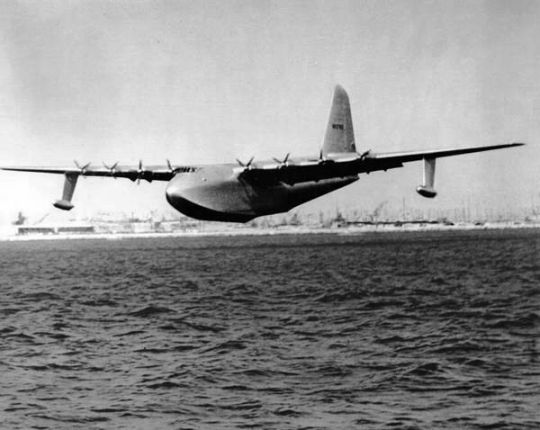
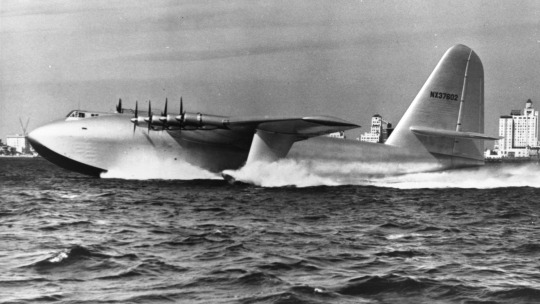
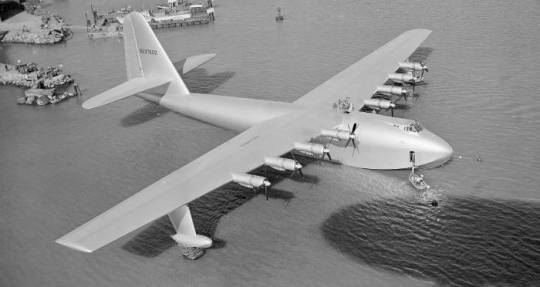
Hughes H-4 Hercules
Crew: 3
Length: 218 ft 8 in (66.65 m)
Wingspan: 320 ft 11 in (97.82 m)
Powerplant: 8 × Pratt & Whitney R-4360 Wasp Major 28-cylinder air-cooled radial piston engines, 3,000 hp (2,200 kW) each
Cruise speed: 250 mph (400 km/h, 220 kn)
Range: 3,000 mi (4,800 km, 2,600 nmi)
Service ceiling: 20,900 ft (6,400 m)
4 notes
·
View notes
Text
Citroën eC3 Feel DT: Affordable Electric Hatchback Review
₹13 Lakh The Citroën eC3 Feel DT is an electric hatchback that blends practicality, eco-friendliness, and affordability, making it a compelling choice in the growing EV market. Let’s explore the vehicle in detail across various aspects. Performance and Powertrain Motor: The eC3 is powered by a Permanent Magnet Synchronous Motor delivering 56.22 bhp and 143 Nm of torque. While modest, this…
#10.24-inch Touchscreen#320 km Range#ABS with EBD#Affordable EV#Android Auto#Apple CarPlay#Automatic Transmission#Budget EV#Citroën eC3 Feel DT#City Car#Compact EV#Connected Car Technology#DC Fast Charging#Dual-Tone Colors#Eco Mode#Electric Hatchback#family-friendly EV#French Design#Front Wheel Drive#Lithium-Ion Battery#MyCitroën Connect#Practical Design#regenerative braking#Tilt Steering#Urban Commute
0 notes
Text
To counter my current bout of wanderlust (against which I can't do much at the moment) I looked through my hiking guides for tours in < 1 h driving distance, and made a list of those that are the most interesting to me.
I have two books and it's interesting how they're different. Both were gifts when I moved here and I never actually compared them directly.
One (from Kompass, for my German followers) is definitely made with a wider audience in mind who's not experienced in hiking: not many tours, all quite easy as far as I can see, even when the difficulty is given as "difficult." Most of the tours end in the same place where they started and many starting points can be reached with public transport. There are altitude profiles for each tour and even small snippets of maps. The book contains glossy pictures and gives additional info about the region; it seems to be written for tourists. For each interesting destination, the book presents 1 tour.
The other (Rother) contains a greater number of tours that are presented with much less fanfare. This book assumes that you own a map of the region, tours may start in remote places so you need a car. Many routes go from one destination to another instead of in a circle - it would be possible to create a weekend-trip or longer just with tours from this book. But the biggest difference: the tours that are marked "difficult" in the Kompass book are on par with the easiest tours you can find in the Rother book.
Also, I think the times listed for the tours don't quite match; in the Kompass book a tour with 17 km and 320 m altitude is listed as 5 1/2 hours, and in the Rother book one with 17 km and 600 m altitude is said to be around 5 hours. It depends on the conditions of the path, sure, but I'm curious to see where I fall.
In any case, I have now compiled a list with 19 tours from which I can choose, ranging from a tour of just 10 km with 190 m in altitude to one of 31 km with 1200 m in altitude, and from "start from my front door" to "drive an hour to get there."
My hiking boots need new soles and I need free days, but I'm going to find the time for at least some of the tours this year.
2 notes
·
View notes
Text
Discover the Pinnacle of Luxury Living at Godrej Miraya in Gurgaon

When it comes to luxury living, few projects can rival the elegance and sophistication of Godrej Miraya, located in the prestigious Sector 43, Golf Course Road, Gurgaon. Designed to offer an unparalleled living experience, this new launch by the renowned Godrej Group is redefining urban luxury with its meticulously crafted 3 BHK and 4 BHK apartments. Here’s why Godrej Miraya deserves to be your next address in Gurgaon, one of the Top 10 Best Places to Live in Gurgaon.
Project Overview
Nestled in the heart of the city’s most sought-after location, Godrej Miraya is a masterpiece that seamlessly blends modern luxury with thoughtful design. The project features expansive apartments starting from 2711 Sq. Ft. onwards*, priced at 12 Cr onwards*, ensuring exclusivity and sophistication.
The apartments are designed with an emphasis on natural light, open spaces, and a tranquil environment. With private lift lobbies, 11-foot-wide decks, and large master suites, Godrej Miraya is crafted to offer the ultimate luxury lifestyle.
Key Highlights
Exclusive Tower with only 320 residences
2 to a core apartments for enhanced privacy
Private lift lobbies with 2 lifts per apartment
Direct & longest views of the lush landscape
Crystal Club featuring a full glass façade
Large Master Suite with parallel dresser
Amenities That Redefine Comfort
At Godrej Miraya, every amenity is thoughtfully designed to elevate your living experience:
Landscaped blues and greens
Tranquil reflective pools
The Crystal Club
Café with outdoor seating
Business Centre
Jacuzzi Alcove
Aqua Gym
Grand arrival experience

Floor Plans & Configurations
Godrej Miraya offers spacious 3 BHK apartments starting from 2711 Sq. Ft. onwards*, priced at 12 Cr onwards*, and 4 BHK apartments ranging from 3897 Sq. Ft. onwards* to 4566 Sq. Ft. onwards*. Prices for the 4 BHK apartments are available on request.
Features That Set Godrej Miraya Apart
Reflecting Exclusiveness
Every aspect of Godrej Miraya reflects exclusivity, from the private lifts to the 2-a-core apartment concept, ensuring absolute privacy and convenience.
Reflecting Grandness
Experience grandeur with large living spaces, a majestic entrance, and an overall ambiance that makes every moment special.
Reflecting Peace & Calmness
Enjoy resort-like landscaping that offers a serene retreat from the hustle of city life.
Reflecting Architecture
Designed by DP Architects, Singapore, the architecture embodies luxury and functionality in every detail.
Location Advantages
Strategically located on Golf Course Road, Godrej Miraya offers unmatched connectivity and proximity to essential landmarks:
Sector 53/54 Metro Station: 1.4 Km
Gd Goenka Signature School: 2.3 Km
Ardee Mall: 2.8 Km
IILM University, Gurugram: 3.7 Km
Fortis Healthcare Limited: 5.1 Km
Indira Gandhi International Airport: 14.9 Km
Popular Projects in Gurgaon
Apart from Godrej Miraya, Gurgaon is home to some of the most luxurious residential projects, including:
DLF The Camellias: Synonymous with opulence and exclusivity.
DLF The Magnolias: A haven for luxury enthusiasts.
DLF Imperial Residences: The epitome of sophistication and modern living.

Why Choose Godrej Miraya?
Godrej Miraya offers a lifestyle that’s uncompromising in every aspect. With its strategic location, world-class amenities, and exquisite design, it’s more than just a home—it’s a statement of luxury. Whether you’re looking for the best place to live in Gurgaon or an investment that promises high returns, Godrej Miraya is the perfect choice.
Embrace the future of luxury living at Godrej Miraya. Book your dream home today and become a part of Gurgaon’s most exclusive residential community.
You can find here more luxury Projects In Gurgaon from Premium Developers in promising locations.
Contact Us:-
Website:- www.luxuryresidences.in
Call:- +91 9899055893
#godrej miraya#godrej miraya sector 43#godrej miraya sector 43 gurugram#godrej miraya sector 43 gurgaon#godrej miraya gurugram#godrej miraya gurgaon#godrej miraya apartments#godrej miraya sector 43 gurgaon project#godrej miraya sector 43 project#godrej miraya sector 43 apartments#upcoming godrej miraya sector 43#godrej miraya price#godrej miraya gurgaon flats#godrej miraya project in gurugram#godrej miraya sector 43 in gurugram#godrej miraya 43 gurgaon
1 note
·
View note
Text
youtube
Lētākais Eiropā. Izmēģinām budžeta elektromobili Citroen e-C3
Citroen e-C3 ir pirmais Eiropā radītais un ražotais budžeta elektromobilis, kura cena, ieskaitot valsts un tirgotāja atbalstu, ir zemāka par 19 000 eiro. Kopā ar Citroen dīleri Andre Motors pētām, ko par šo naudu var dabūt. Patiesībā neko daudz. Elektriskajam C3 ir četri riteņi, četras durvis un necila 44 kWh baterija. Neapstrīdama priekšrocība ir tā, ka e-C3 ir krosovers. Lai padarītu auto pēc iespējas lētāku Citroen izņēmis visu lieko un dažviet “pāršāvis pār strīpu” - mehāniskie stiklu pacēlāji pat aizmugurējās durvīs jaunā automašīnā ir kas sen neredzēts. Arī nedalāma aizmugurējā sēdekļa atzveltne ir retums. Pēc kabīnes iekārtojuma e-C3 līdzinās komerctransportam. Te nav pat klimata iekārtas, tikai apsilde un parastais kondicionētājs. Iedarbināšana notiek ar parastas atslēgas pagriešanu. Tomēr kopumā Citroen e-C3 ir lielāks un plašāk aprīkots nekā Dacia Spring. Par spīti pieticīgajam tēlam, pilsētā e-C3 ir ļoti žiperīgs. Tam ir 114 ZS jauda, kas pilsētas ātrumos nodrošina labu dinamiku. Sniedzamīoba ir 320 km(..)
The cheapest in Europe. Let's test the budget electric car Citroën ë-C3
Citroën ë-C3 is the first budget electric car created and produced in Europe, the price of which, including state and dealer support, is below 19,000 euros. Together with Citroën dealer Andre Motors, we explore what you can get for this money. Not much actually. The electric C3 has four wheels, four doors and a modest 44 kWh battery. The indisputable advantage is that the ë-C3 is a crossover. In order to make the car as cheap as possible, Citroen has removed everything superfluous and in some places "shot over the line" - mechanical glass lifters even in the rear doors are something that has not been seen in a new car for a long time. An integral rear seatback is also rare. The cabin layout of the ë-C3 resembles a commercial vehicle. There is not even an climate control here, only heating and the usual air conditioner. Starting is done by turning a normal key. Overall, however, the Citroen ë-C3 is larger and more widely equipped than the Dacia Spring. Despite its modest image, the ë-C3 is very nimble around town. It has a power of 114 hp, which provides good dynamics at city speeds. The range is 320 km(..)
#Latvia#Citroën ë-C3 Aircross#Citroën ë-C3#electric car#electric vehicle#electric crossover#urban EV#made in Europe#affordable EV#demise of big oil#russian defeat#trump's defeat#Citroën#Stellantis#Youtube
1 note
·
View note
Text
Nag Tibba Trek: Perfect Itineraries, No Surprises!

The Nag Tibba Trek is one of the most popular trekking destinations in India, offering stunning views and a refreshing escape into nature. Nestled in the Garhwal region of Uttarakhand, this trek is renowned for its majestic landscapes and the sense of accomplishment it brings to adventurers.
Nag Tibba trek height of 9,910 feet, the trek offers breathtaking views of the Himalayas, making it an ideal choice for both novice and experienced trekkers.
Distance from Delhi to Nag Tibba Trek
The Nag Tibba Trek from Delhi is approximately 320 kilometres (about 200 miles). The journey typically involves travelling to Dehradun first, as it is the nearest major city and a common starting point for the trek. From Dehradun, you would then travel another 80 kilometres (around 50 miles) to reach Pantwari, the base village for the Nag Tibba Trek.
The total travel time can vary depending on the mode of transportation but generally takes around 8 to 10 hours by road.
Nag Tibba Trek Itinerary: An Unforgettable Adventure
Day 1: Journey to Pantwari and Trek to Nag Tibba Base Camp
• Our adventure begins in Dehradun, where trekkers gather at the designated meeting point. After introductions and a quick briefing, we set off on our exciting journey.
• We embark on a scenic 90 km drive through Mussoorie and Kempty, soaking in the breathtaking views along the route, filled with lush landscapes and charming hill stations.
• Upon arrival at Pantwari Village, we kick off our trek to Nag Tibba. The trail starts gently, allowing everyone to acclimatise as we navigate through the beautiful surroundings.
• En route, we will stop at the Nag Devta Temple to seek blessings before continuing our journey. The spiritual ambiance sets a positive tone for the trek ahead.
• As we proceed, the trail becomes rocky, dotted with loose stones, and offers glimpses of picturesque farmland. We cross babbling streams, enjoying stunning panoramic vistas that make the trek even more rewarding.
• After trekking for a while, we’ll encounter the “Pravesh Dwar” sign, indicating our arrival at the Nag Tibba region.
• We’ll navigate through a zig-zagging forest trail, keeping an eye out for shortcuts that could lead us astray. Our experienced guide will lead the way to ensure a safe journey.
• After a rewarding hike, we’ll reach the Nag Tibba Base Camp. Here, we’ll set up for the night, sharing stories and laughter under a blanket of stars as we enjoy the serenity of the mountains.
Day 2: Summit Nag Tibba Peak
• Rise early to the stunning views from the base camp. After a hearty breakfast and freshening up, we’ll embark on the main trek of the day.
• The trek to the peak promises adventure as we traverse through dense forests. If trekking in winter, be prepared for a more challenging experience due to potential heavy snowfall.
• As we ascend, the trail steepens, and after about an hour, we reach the Nag Tibba Base Camp. Just a short distance remains until we reach the summit.
• Walking through peaceful woodlands, we’ll be captivated by the therapeutic sights surrounding us.
• Finally, we’ll arrive at the highest point of Nag Tibba Peak, marked by a flag waving proudly in the wind. This moment of accomplishment is unparalleled, offering breathtaking views of the Himalayan ranges, including Swargarohini, Bandarpoonch, Srikanta, Kala Naag, Gangotri, and the snow-clad peaks of Changabang.
• The panoramic sights of nearby villages add to the magic of this moment, and we’ll take some time to soak in the beauty and tranquillity of nature.
• After cherishing our time at the peak, we’ll begin our descent, retracing our steps back to Dehradun.
• Upon our arrival in Dehradun, our unforgettable journey comes to an end, leaving us with cherished memories and a renewed spirit from our time in the stunning Nag Tibba landscape.
Nag Tibba Trek Packages: Choose Your Adventure
1. Nag Tibba Trek from Pantwari to Pantwari
• Duration: 1 Night and 2 Days
• Cost: ₹1999 per person
• This package includes a round trip from Pantwari, where trekkers will experience the beauty of Nag Tibba, camping under the stars, and enjoying local cuisine.
2. Nag Tibba Trek from Dehradun to Dehradun
• Duration: 1 Night and 2 Days
• Cost: ₹2999 per person
• This option includes transportation from Dehradun, allowing trekkers to enjoy a hassle-free experience with all logistics managed by Universal Adventures. The Nag Tibba Trek package features guided treks, meals, and camping arrangements.
Best Time for the Nag Tibba Trek
Nag Tibba trek best time is from March to June and September to November. During these months, the weather is pleasant, with clear skies and moderate temperatures, making it perfect for trekking. Monsoon season (July to August) is best avoided due to the risk of landslides and slippery trails.
Experience the Beauty of the Nag Tibba Trek
The Nag Tibba Trek is a must-do for anyone looking to explore the stunning landscapes of Uttarakhand. With its moderate difficulty level, breathtaking views, and well-planned itineraries from Universal Adventures, this trek promises a memorable experience without any surprises.
Whether you choose the Pantwari or Dehradun package, get ready to create unforgettable memories amidst the majestic Himalayas!
0 notes
Text
tornado

A tornado is a powerful weather phenomenon that forms when complex weather conditions combine to create a large vortex of air that swirls around a low-pressure center. Tornadoes are known for their powerful winds, which can range from 74 mph (119 km/h) to more than 200 mph (320 km/h).
visit our store from herehttps://alhumble.gumroad.com/l/E-booktornado
0 notes